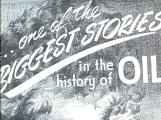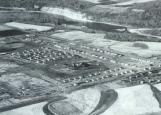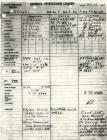14
"Further explorations in the Waterton area proved fruitless but the success, brief as it was, of this well encouraged a widespread search which led to the discovery of the Turner Valley Field in 1914."George Franklin Stafford went on to drill wells in the Peace River area, whereas Turner Valley would be his son's destination.
16
Young George Lloyd Stafford,(Lloyd) born on July 8, 1905 at a homestead in Lacombe , went on to follow in his father and grandfather's footsteps. He went to Turner Valley in 1926, and worked for small independent companies including Spooner, Vulcan, United Oils, New Black Diamond Oils, Major Oils and National Petroleums.He initially worked as a steam engineer and tool-dresser on cable tool rigs, then driller and drilling supervisor.
18
The first drilling in Turner Valley, occured at a seepage site near Sheep River. The well, drilled by Calgary Petroleum Products Company, Ltd., headed up by Archibald Wayne Dingman, was called the Dingman No. 1 "Discovery Well". They began drilling in January 1913 and the well came in on May 14, 1914 at 2718 feet. The well produced 4 million cubic feet of natural gasoline- naptha.20
Between 1928 and 1930, Lloyd drilled Model #1 by cable-tool and they hit natural gas from the Turner Valley Zone- the first well from below the Limestone. This well later turned to naptha production and then to crude oil in 1930.21
In 1920 Calgary Petroleum Products company found themselves near bankruptcy after a fire nearly destroyed their processing plant. Imperial Oil and shareholders from Calgary Petroleum Products, formed a new company- Royalites Oil Company Ltd.In the early 1930s Robert A. Brown, head of Turner Valley Royalties, began drilling on April 7, 1934. Since Model #1, drilled by Lloyd Stafford, had turned to crude oil, Brown believed that if they drilled deep enough they would find a crude oil pool. They drilled to 6828 feet before hitting a crude oil. By June 16, 1936, the well was producing 850 barrels of oil per day.
This was the third and final boom for Turner Valley, and by the end of the war, the field was not producing nearly enough oil and gas to satisfy Canada's ever growing needs.






